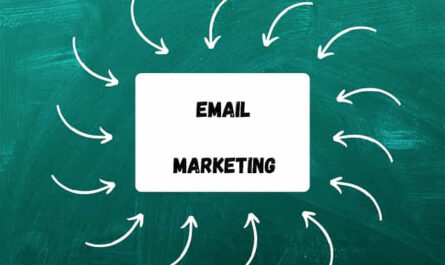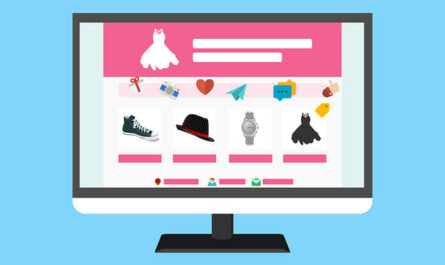
Looking to find what buyer persona profile means? Well, hope this article will help you.
In a previous article, I talked about how to write content for your site and how important it is to know first who you are writing for; in other words, you need to know your target audience very well.
Have you ever talked to someone and had the feeling that you are talking to yourself because the person in front of you does not understand or is not interested in what you are saying?
Well, that’s exactly what happens when you write web content or ads without knowing your audience. You end up talking to yourself, and that costs you time and money.
An extremely useful tool, if not mandatory both for the creation of web content and for marketing campaigns is the buyer persona profile.
Without it, not only will you be writing content in vain, but you will not be able to make money from your blog. Even if you write well, you have no advantage if no one gets to read you.
(This post contains some affiliate links. Should you click an affiliate link and make a purchase I may receive a small commission at no extra cost to you.)
What is a buyer persona profile?
In a nutshell, a buyer persona profile is a generalized representation of your ideal buyer. Its purpose is to help you better understand those you are addressing and targeting through your marketing efforts.
Careful! Although fictional, this profile does not include the characteristics that YOU WANT your client to have, but those that he really has, in reality, are therefore based on real data.
Yes, I know, getting real data takes time and effort, but it’s well worth it because this way you will send the right messages to the right people at the right time. What does this mean? That your marketing strategy will be much more effective.
If your business is very niche, a single buyer persona profile should ensure the representativeness of your customers. On the other hand, if the business area is larger, it is recommended to create 3 to 5 buyer persona profiles in such a way as to be sure that most types of customers are covered. This segmentation will help you a lot when you launch marketing campaigns.
In addition, the buyer persona profile will help you correctly identify the buying intentions of users who need your services or products.
What does a buyer persona profile contain?
The buyer persona profile contains information to help you get to know and better understand your ideal customer – who he is, what he appreciates, what his passions are – and through him your customers in general.
Without necessarily having a standard structure, a buyer persona profile contains the following information:
Name
Job
- Company information (domain, size, etc.)
- Function details
Demographic data
- Age
- Sex
- Income
- Location (urban, suburban, rural)
- Level of education
- Family status (married, unmarried, divorced, parent)
Interests
Personal goals
Fears
Motivations to buy
Depending on the type of business, it is possible that your buyer persona profile is completed with additional information such as passions, the main source of information, skills in the use of modern technologies, etc.
Very relevant information especially when you are just starting out with your online business.
And now, the big question:
How exactly do you create a buyer persona profile?
As I said, the task is not simple, to be done in two steps and three movements, but it can be done even by those like you, who are at the beginning of the road.
And, in fact, the question that interests you the most is where do you get the information needed to create a buyer persona profile? Well, let’s see.
I was saying that a buyer persona profile is built using real data. Well, the first real source of data right under your nose is the website.
#1 Google Analytics
Yes, yes, we really can’t live without him. At least not in the digital age.
Google Analytics is a great source of information for your profile. By analyzing the data they provide you, you will be able to find out where site visitors come from, what pages they visited, or how much time they spent on the site. This data practically reveals to you what wishes/needs they brought to the visitors on your site and what tools they used to reach you. See? You already know something about your ideal client.
#2 Facebook
After Google, it follows Facebook, of course. Facebook insights can also provide you with valuable information about your audience. Just take a look at Statistics on your company’s Facebook account and you’ll find some demographics that will definitely help you, as well as data from which you can deduce what they like and what they don’t, depending on their reaction to certain types. of posts.
Then, with the help of Facebook and social media in general, you have the chance to find out directly from consumers what they want, what they like, and what they don’t like about your products or services. How do you do that? Reading their comments, reviews, and messages left on the social media account or simply asking them. It’s called social media listening and will help you complete your buyer persona profile.
#3 Your team
The people in your company, from those who deal with marketing to those with customer service responsibilities, are also an important source of information. Virtually any employee who interacts with the end customer could be helpful in creating the buyer persona profile.
#4 Customers
Above all, they, your customers, are an extremely valuable source of information, as they have bought your products and have already interacted with your company, being able to give an opinion. How do you find information from them? By interview: questionnaires applied in stores or online, on the site, telephone or email surveys, focus groups (if your budget holds).
It is important to consider both satisfied and dissatisfied customers. No matter how good your pride is, only positive opinions will not help you create a correct opinion of your customers.
Negative opinions could help you, for example, find that your product is difficult to use. So, from such a lesson you will learn that your product needs improvements in certain aspects, what are the objections of customers and what could prevent them from buying.
Another benefit of direct interviewing consumers is that you don’t necessarily need to offer them something in return, like a voucher (although it will help if you do). Usually, people like to be listened to, to be asked for their opinion, to feel involved, and in this way, you will be able to increase their degree of loyalty to the company.
#5 Potential customers
Your research should also be supplemented with information from potential customers, those people who have not yet bought your products and who do not know much about your company. In this case, use the information provided by web analytics and leads gathered over time.
For example, take a look at the data about those who entered your site at some point but did not make any purchase, put products in the cart, but without completing the order, they somehow interacted with your products and company. Extract data about who they are, how they got to you, how much time they spent on the site, and if you have their contact details, it would be very helpful to interview them to give depth to your research.
#6 Personal remarks
If you do not have the time or financial resources, you can try to outline a buyer persona profile based on personal observations. But try to be as objective as possible. Then, over time, fill in and update your profile information with data from analytics, social media, and interviews.
#7 Search Console
Along with Google Analytics, the Search Console will help you better understand what your target audience expects from you. What is traffic behavior, what queries are popular, or what technical errors influence the online experience are just some of the reasons why you should use Search Console reports every month?
What should the interviews contain?
To complete the buyer persona profile, there are several categories of questions, which can, and even should, be adapted and completed according to your target. Below are some of these possible categories and related questions.
Position / Role
- What is your position and role in the company?
- What does an ordinary working day look like?
- How are the results of your work measured?
- What skills are needed for that job?
- What kind of knowledge and tools are needed in the job?
- Who are you reporting to? Who reports to you?
Company
- In what field does the company operate?
- What is the size of the company (turnover, number of employees)?
Objection
- What are your responsibilities within the company?
- What does it mean to be successful in your job?
Challenge
What are the biggest challenges?
Information / Socialization
- What are the sources from which you are informed about your job?
- Publications or blogs do you read?
- Associations or social networks do you attend?
Personal background
- Demographics (gender, age, family status, income)
- Educational background: what is the educational level (high school, post-high school, university, etc.), graduate school, specialization
- Career: How did you get where you are now professionally?
Purchasing preferences
How do you prefer to interact with companies (via email, phone, in-person)?
Do you use the internet to search for companies and products? If so, how do you look for the information? What was the process?
Describe the latest acquisition process. Why did you consider purchasing a particular product, how did the evaluation process go, and how did you decide to make that purchase?
The most important and redundant question, however, is “why”? Which must appear as often as possible during the interview as it is meant to reveal information about consumer behavior, their goals, and what determines them to do something.
How many interviews do you need?
Well, there is no standard rule on the number of interviews required for the results to be valid. As an idea, however, 3-5 interviews can be applied for each category (customers, potential customers, employees).
But the safest way is to stop the interviewee when you start to notice recurrences when you realize that the information received is starting to repeat itself. This means that you have reached the point where patterns can be created.
How do you use the information gathered?
Once you have completed the information gathering process, the next step is to identify those patterns that will shape your buyer persona profile.
Conclusion
Buyer persona profiles will help you identify with your audience and as such find the best solutions to their problems and needs. And when you find the best solutions, everyone is happy and everyone wins.








